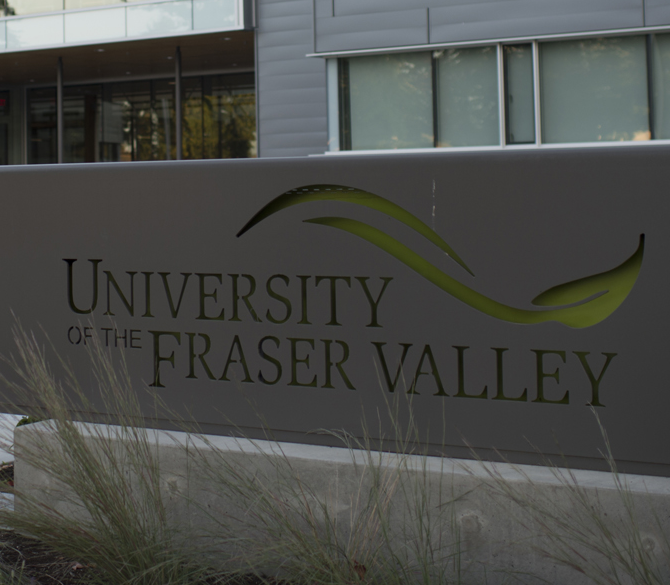By Jess Wind (The Cascade) – Email
Print Edition: November 6, 2013
How does a university make money when the government keeps cutting funding? UFV is asking that question to all its departments as part of its new innovation fund.
At a November 4 budget forum held at the Abbotsford campus, chief financial officer Jackie Hogan presented the direction for UFV’s budget over the next three years following the announced provincial cuts ($50 million) to post-secondary education.
After reading out the provincial mandate Hogan detailed UFV’s response.
“We want to build the best undergraduate university in Canada,” Hogan said. “We want to be a leader in social, cultural, economic, and environmentally responsible development in the Fraser Valley and we want to be innovative, entrepreneurial, and accountable in delivering the first two goals.”
One way to ensure UFV doesn’t feel the hit from the funding cut is to raise tuition rates. However, Hogan explained that with the tuition limit policy that caps tuition increases at two per cent per year for domestic students, that isn’t an option.
UFV is looking at enrolment rates and international student tuition rates as potential options, as they are not under the same limit policy.
In the future, Hogan explained that international tuition may be calculated based on credit instead of the flat rate that is charged now, but that has yet to be put into effect.
Therefore, cuts need to come from within departments. UFV is giving those departments the opportunity to find ways to save money through its proposed innovation fund.
Hogan finished her budget presentation and then opened the floor to the packed room. Former faculty and staff association (FSA) president and English department faculty member Virginia Cooke spoke to the underlying feeling of the new fund.
“I just want to mention that the way this is getting rolled out to departments is that, with this new model (and I’m sure its not intentional) but the feeling among faculty is ‘oh my god, we’re failing here, here’s your minus however many per cent and you have to do something,’” she said. “I think theres something a bit wrong with how it’s coming across.”
Departments have been made aware of a percentage of their budget that they have to cut, which ranges between 0.7 and 3.5 per cent.
Hogan responded to Cooke’s concerns, explaining that they wanted to go with a transparent model, rather than make blanket cuts across the board.
“It’s either an incremental model … and the problems are dealt with centrally, or we transparently share the information,” she said. “We say ‘this is the size of the problem, we’re working on solutions together’ … perhaps some more thought to communication of how to share it.”
Other concerns were raised in the room from how the community and other external parties are being made aware of UFV’s financial situation to if and when the cuts will begin to affect students. Canadian research chair Lenore Newman wanted to know just how dire UFV’s financial situation is.
“Looking at the numbers my biggest concern is when does this become mathematically impossible to deal with?” she asked. “Will we have to close programs and lay people off [this year] to close the hole? … How much last-ditch safety, turning lights off in the room, not polishing the floors do we have before we’re actually seeing programs being closed and people laid off. How bad is it?”
VP academic and provost Eric Davis explained that while there is nothing they know for sure, considering UFV is still waiting to hear exactly how much the government will be cutting from UFV specifically in the coming fiscal year out of the $20 million reduction, they are trying new ways to save money to protect programs and, ultimately, students.
“It’s not going to be an easy process to figure out how we get through the budget this year and the next year and the year after which is why we’re trying to think outside the box,” he said. “Encouraging people to be innovative, encouraging people to be entrepreneurial. Looking at different ways of doing things because business as usual is not possible.”


